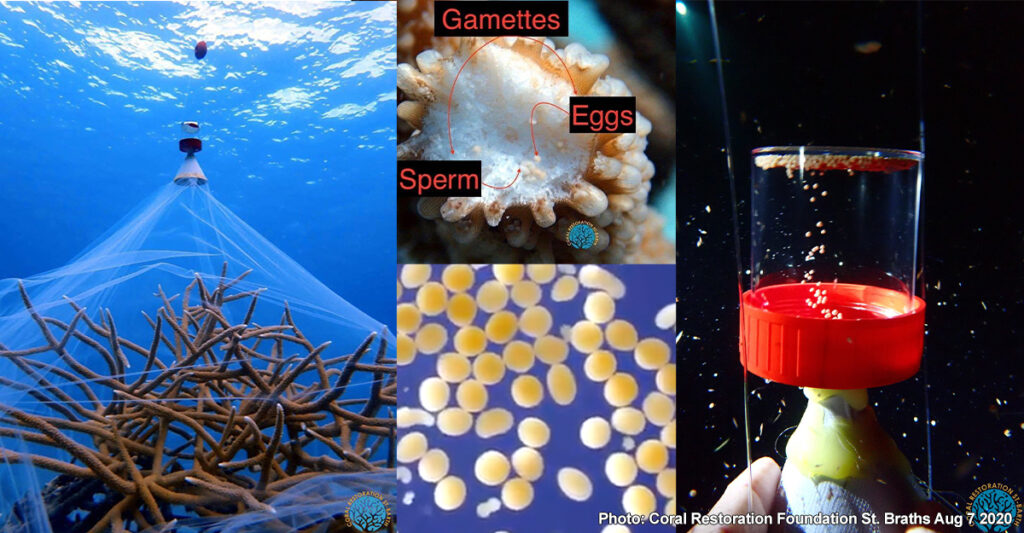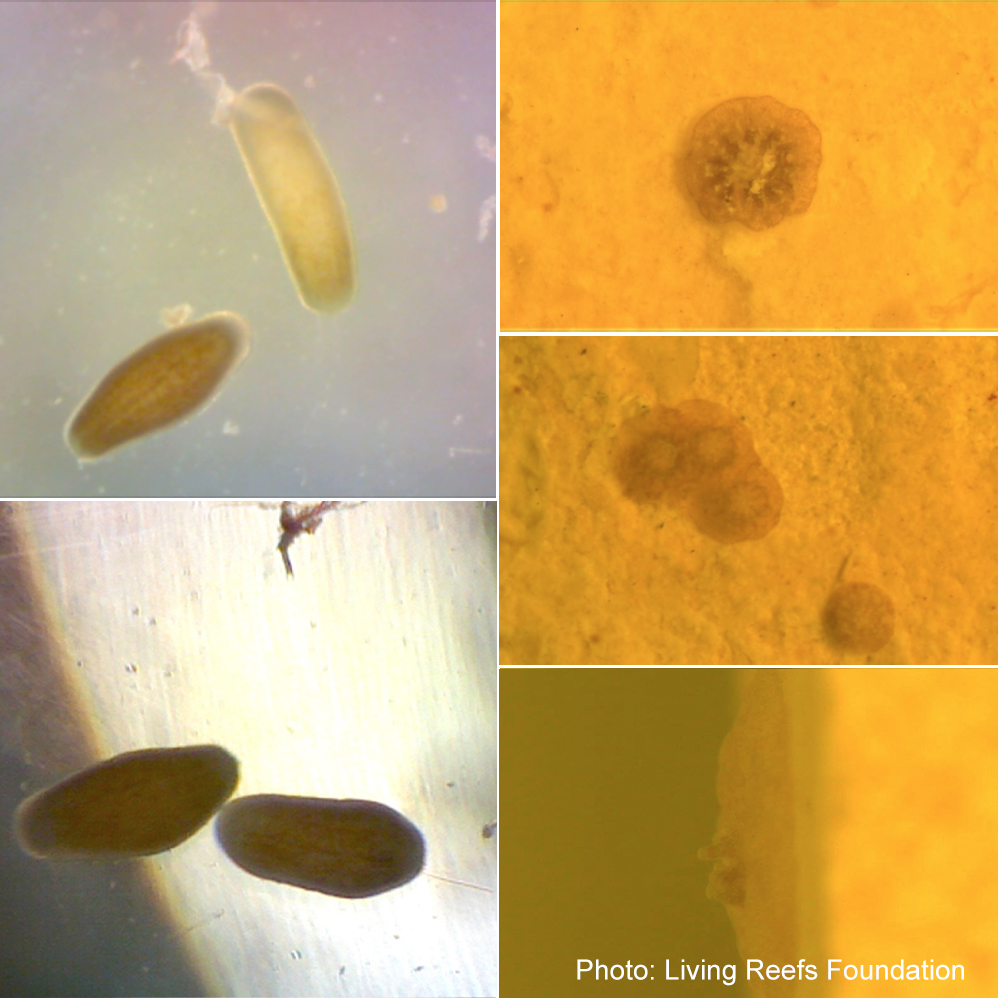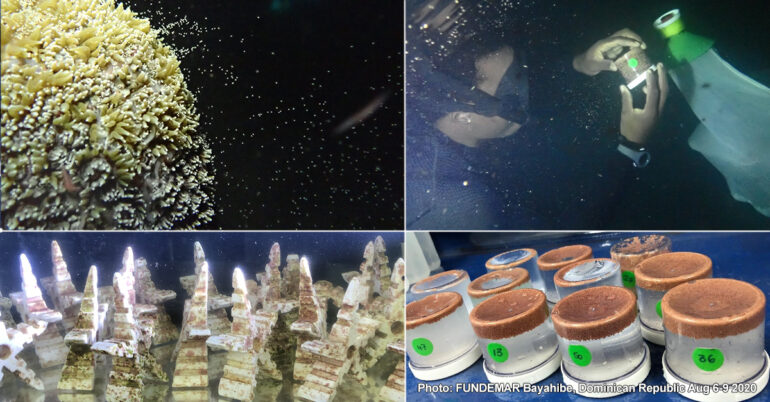The full moon in August is a frenzied time for Caribbean coral scientists. Three of the Caribbean’s most iconic coral species, Staghorn (Acropora cervicornis), Elkhorn (Acropora palmata), and Pillar Coral (Dendrogyra cylindrus), are preparing for one big night of synchronized spawning.
During this period, scientists are busy collecting millions of coral gametes and raising the fertilized eggs in aquariums in a quest to preserve genetic diversity. Spawning starts roughly 100 minutes after sunset, however, predicting the precise day for spawning varies based on location, species, and light pollution among others.
For one of the most endangered Caribbean species, pillar coral, accurately predicting spawning times can quite literally be the last hope in saving the only surviving colony on a reef. Each year CARMABI publishes a coral spawning prediction calendar, and across the Caribbean researchers share their observations online helping to build a crowdsourced database of spawning times.
Since 2014, stony coral tissue disease and threats from global warming have not been kind to Caribbean reefs. And, since 2018 the same coral disease has wreaked havoc decimating stretches of otherwise healthy reefs. Now more than ever spawning research is a glimmer of hope for the future coral reefs.
For the second year in a row, scientists at The Florida Aquarium have successfully spawned threatened Atlantic pillar coral though lab-induced techniques in the Project Coral lab. This year the team has collected hundreds of thousands of fertilized eggs, which are critical for preserving the last remaining 50 colonies for pillar coral still alive in the state of Florida.
Coral spawning for less threatened boulder, brain, and plating species happens far more often than you would imagine. Some species like the grooved brain coral (Diploria labyrinthiformis) have been recorded spawning from April to October.
From the Florida Keys to the Bahamas, Dominican Republic, Cuba, and St. Barths, spawning observations and images are shared online for all to see.

The Living Reefs Foundation in Bermuda has been posting some microscopic content worth checking out, including a neat look at 4-hour old larva up to 3-week old settled polyps.

August is always a busy month for coral spawning because of the importance of preserving the last remaining branching Acropora species as well as the endangered pillar coral. Different species spawn at various points throughout the year and spawning predictions are helping scientists collect more viable fertilized coral eggs in the wild.
ach year we are seeing even more of these coral babies survive thanks to breakthroughs in captive coral research, and the use of aquarium technology. Congratulations and thank you to everyone involved in protected and preserving these corals for the future.
Cover images FUNDEMAR Bayahibe Dominican Republic



